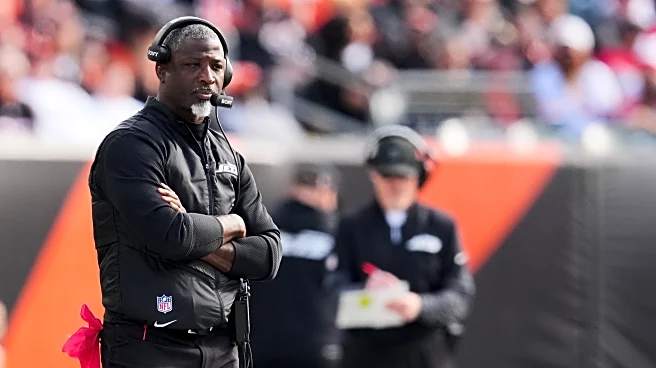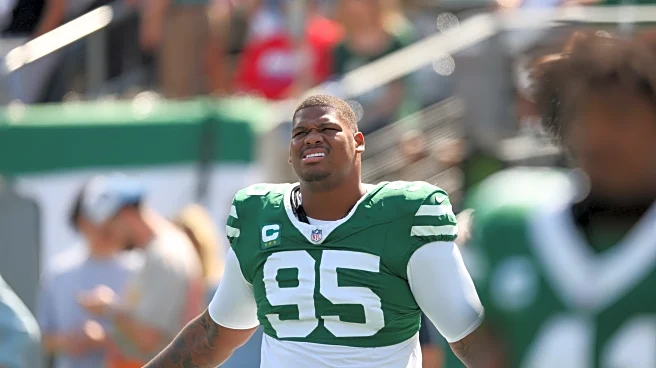What's Happening?
In June, the New York Jets signed Sauce Gardner to a $30.1 million-per-year contract, making him the highest-paid cornerback in the NFL. However, less than four months later, the Jets traded Gardner. General Manager Darren Mougey explained that the contract was
structured to be easily tradeable, allowing the team flexibility to move Gardner if a valuable offer arose. This strategic approach to contract structuring is not uncommon in the NFL, where teams often design deals to maintain cap flexibility and the ability to trade players if necessary. The Jets' decision to trade Gardner was influenced by an offer they deemed too good to pass up, involving two first-round picks and receiver AD Mitchell from the Colts.
Why It's Important?
The trade of Sauce Gardner highlights the business-oriented nature of professional sports, where player contracts are often structured to allow for strategic trades. This approach enables teams to adapt to changing circumstances and capitalize on valuable trade offers. For the Jets, trading Gardner for significant assets reflects a long-term strategy to build a competitive roster. The move underscores the importance of contract flexibility in managing team rosters and salary caps, allowing franchises to optimize their resources and maintain competitiveness in the league.
What's Next?
The Jets will now focus on integrating the new assets acquired from the trade into their roster. The team will likely evaluate potential draft picks and consider how to best utilize the additional first-round selections to strengthen their lineup. Meanwhile, the Colts will work on incorporating Gardner into their defensive strategy, aiming to leverage his skills to enhance their performance. Both teams will continue to monitor the impact of this trade on their respective seasons and future prospects.
















